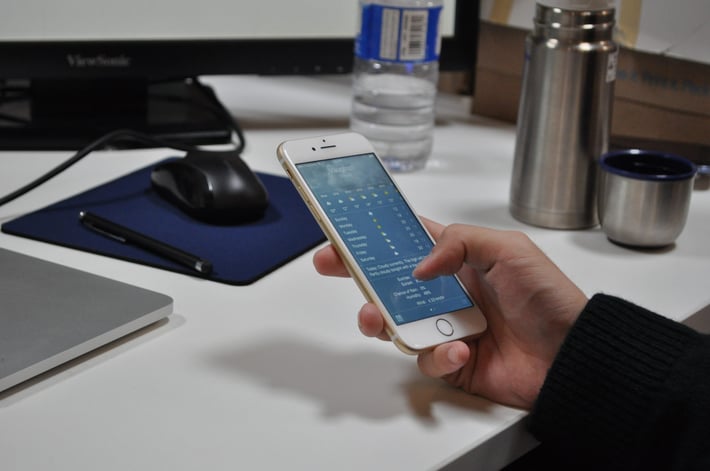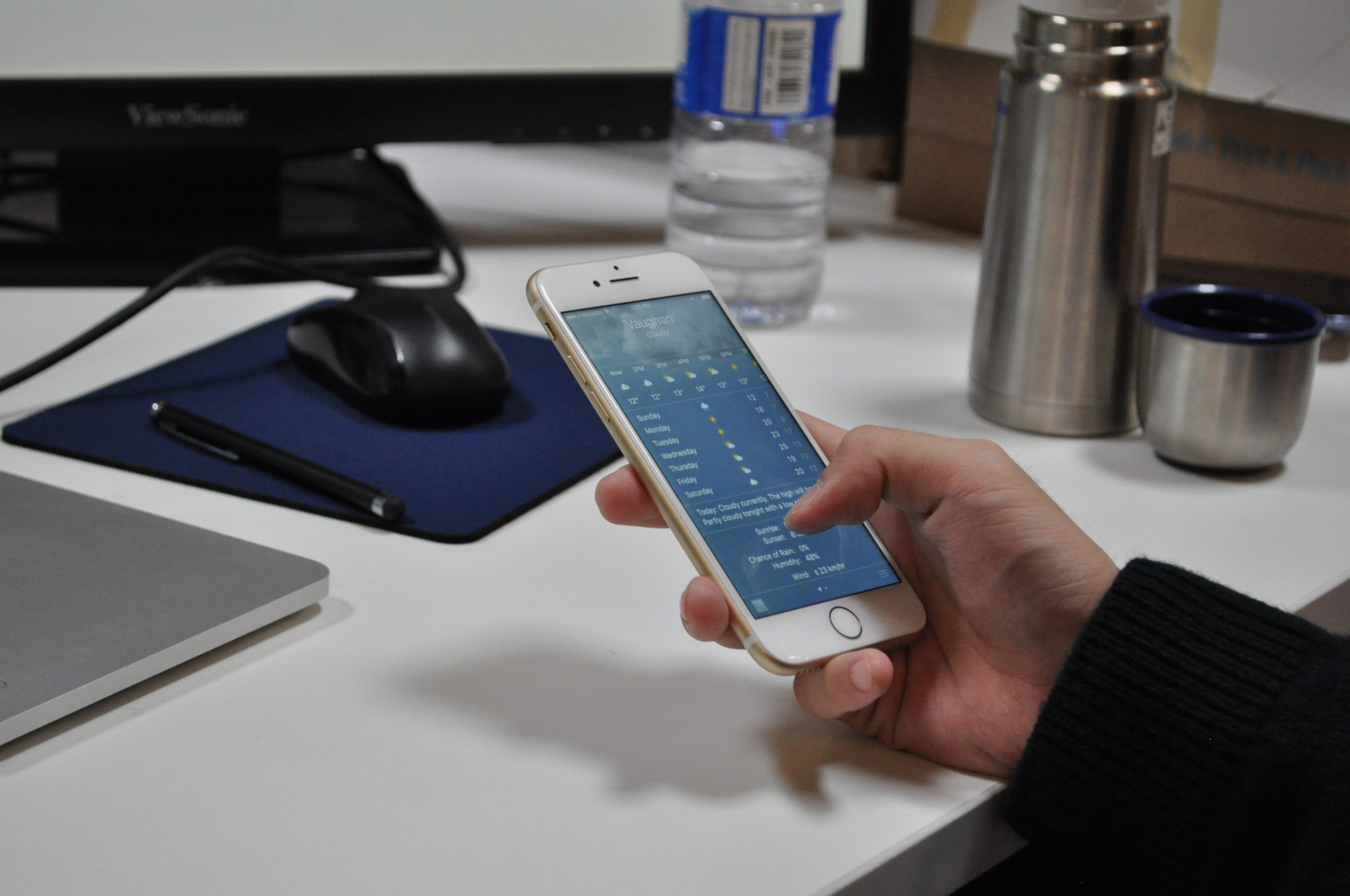Why apps fail and how to avoid app failure
What does it take to build an app that’s successful in today’s app market? Proper functionality is just the beginning.
As of March 2017, Android users were able to choose between 2.8 million apps in Google Play, while Apple’s App Store housed 2.2 million available apps.
While apps are used more today than ever before, they aren’t downloaded as often. This means that competition for users’ attention is heavy. It’s important for app developers to conduct a lot of research in order to provide value and solve pain points for their users before beginning mobile app development.
With so much choice, users aren’t likely to give an app a second glance. In fact, almost 35% of mobile app engagements last less than a minute, suggesting users don’t take long to make judgments. As a result, it’s increasingly difficult to develop and release a mobile app for any platform that performs exceptionally well in today’s market.
Benchmarking Mobile App Success
The definition of success differs depending on the nature of your app and your business goals. Typically, KPIs for measuring success is reflected in the following:
- Quantity: The number of downloads, the percentage of target customers, usage statistics, or other quantitative metrics.
- Revenue Goals: If your app is set to monetize, success may be defined as a revenue figure, which may be driven by paid downloads or via in-app purchases.
To ensure that your mobile app is successful, you need to analyze where other companies went wrong. It’s important to learn from the mistakes of your competition to give your app a better shot at success. We’ve helped you out by outlining the 6 top reasons why apps fail.
6 Common Reasons Why Apps Fail
While competition in the app market is high, failure isn’t always a result of bad luck. In most cases, there are other contributing factors. Here are four of the most common reasons that apps fail that can’t be chalked up simply to high competition.
1. Poorly Researched Market & Audience
Great ideas in theory often don’t make great apps in practice. The decision to launch a project should be research driven. Is there a market for the type of app you want to develop? Are you solving a certain problem? What’s the competition like? Realistically, would people want to use your app? Are you making someone’s life easier? Providing a unique experience? Is the idea defined well enough to be executed?
It’s easy to think that customers will love your app, but can you justify it? Have you researched the market? Have you checked what your competitors do? Have you gathered any data to prove that you’re not going to waste time and money on something nobody really cares about?
If you decide to build an app without doing the research, defining the audience, and strategizing use cases and features that will appeal to that audience, you may find that you build a product you assume people will want, when in reality they don’t.
Introducing a new product to the market should be an iterative process to validate assumptions about user behaviour and the product itself. Often, a prototype isn’t enough to validate the product and achieve internal buy-in. An iterative process is highly beneficial to continuously meet the needs of your users and maintain engagement. But how do you know exactly what to build for your users? How will you solve their pain points and exceed their expectations far beyond what your competition offers? Consider a minimum viable product, which includes the feature or features required to solve a core problem for a set of users and be released to market.
49% of developers reported that they developed apps based solely on their own needs. Those same developers ended up generating the least amount of revenue.
2. Lack Of Originality
The truth is that the app stores are oversaturated with the same apps. Successful apps like Uber and Airbnb both have a strong value proposition.
Competitive research will help reveal your competition’s strengths and weaknesses in order to define your own competitive advantage. Building a product that offers the same features as your competition’s won’t help you win over many users. A unique value proposition (UVP) is the first step you need to consider to optimize user loyalty and overall business success.
3. Ignoring Platforms
Android and iOS (as well as other platforms) have very intuitive interface guidelines. They operate in different ways, using different gestures and common buttons or prompts placed in different areas.
For example, Android users are accustomed to a back button that is built into the hardware. Apple devices don’t have this. Failing to account for platform-specific nuances like this can severely affect user experience.
When apps don’t perform well across the scope of devices, networks, and operating systems, it becomes a major problem. Users get frustrated when an app works on the iPhone, but not on their iPad, for example.
When developing for multiple platforms, it’s important to build with platform differences in mind. Apps that don’t do this correctly will result in frustrated end users, and given that the average user will decide in less than a minute whether or not your app is worth using, a little frustration can mean a whole lot of failure.
4. Poor User Experience
There are a lot of components involved in building an app that offers a great user experience, but at the basest level, your app needs to be intuitive. If a user struggles to perform basic functions on your app and can’t figure out core functionalities easily, the result is very poor usability. Some other examples of poor user experience include:
- App performance issues (slow or lagging)
- Long load times
- Long registration processes
- Features that are difficult to access
One thing to pay particular attention to is platform-specific UI/UX best practices. As mentioned above, ignoring these is a costly mistake as each platform has elements that are unique and that their users are accustomed to. For example, minimum sizing for tappable controls or specific swipe gestures will differ from platform to platform, with users expecting results from the actions to be familiar and consistent with other platform applications.
Resources: iOS Human Interface Guidelines, Android Design Principles
5. Improper Testing
Fifty-eight percent of iOS-based devices suffer from performance failures like apps crashing or components shutting down, according to a study by Blancco Technology Group (BTG).
While it’s rare that an app will be without minor bugs upon launch, making sure you invest in QA before shipping can ensure there are no major issues. If an app isn’t tested properly, it’s bound to be rife with bugs that impact user experience and is prone to crash. A single crash is more than enough to stop users from ever using it again. In fact, some of the most common negative reviews on app stores are related to apps crashing. And the more negative reviews you have, the more likely your app is to fail.

App testing must be done thoroughly, with a documented process in place, in order to ensure that your application is as market-ready as possible. It’s unlikely you’ll get a second chance if you fail to entice users the first time around.
6. A Poorly Executed Mobile App Launch
You’ve done all of your market research and now it’s time to focus on the execution of the mobile app launch. For a launch to be successful, there should be an established marketing plan to ensure that every step is made and executed properly in a timely manner.
According to a survey by Quettra, 77% of daily mobile users stop using an app after just three days. If you want your app to have a high download and user retention rate, it needs to make a good first impression within the first few days prior to the launch. This is a critical time to focus on highlighting the value of the app in order to optimize the onboarding process. If you don’t impress your new users quickly, you’ll likely lose their interest altogether.
A mobile app launch isn’t a one-time event. There will always be room for improvement which makes the mobile app launch a cyclical process that requires reassessment as market demands change. Recently launched mobile apps should be updated and relaunched regularly to keep users engaged through new updates and features.
Closing Thoughts
The performance of an app depends on many factors that can range from competition to marketing budgets to sheer luck. But beyond these factors, poor research and poor execution are common reasons why apps fail when launched. Focusing efforts on market and audience research, following platform-specific best practices, and thorough quality assurance testing can be the difference between failure and success.


